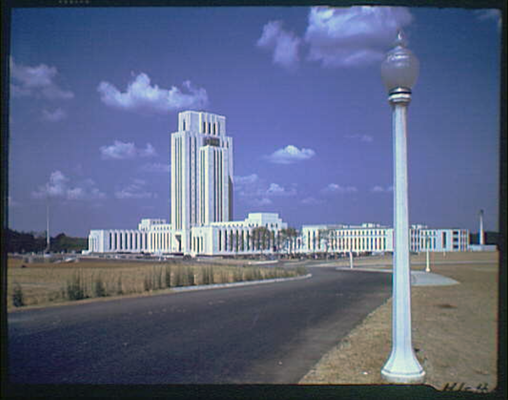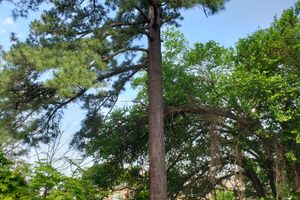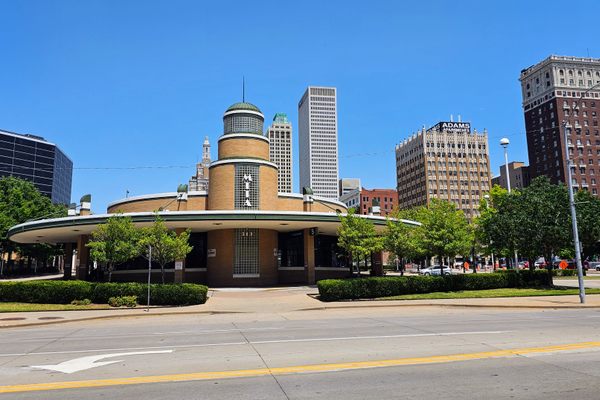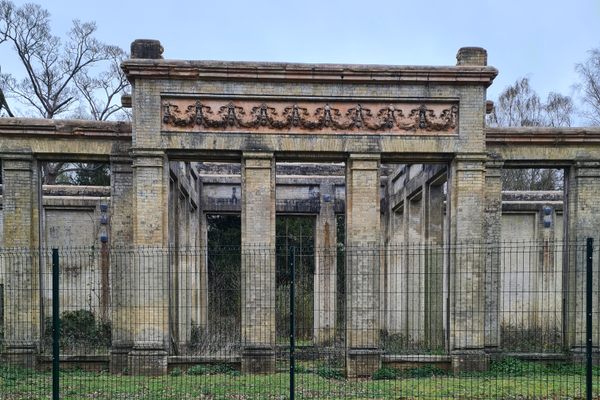About
Today, Bethesda is a bustling suburban downtown, but back in the 1940s it was rural countryside far away from the urban grime. It was the perfect place for Franklin Delano Roosevelt’s ill-advised Art Deco hospital tower.
If asked to imagine a hospital, you'll probably think of a massive low rise, boxy building. Not if you're FDR , however. In 1936, he had been invited to make the address for the dedication of the new Nebraska State Capitol building, and its design stuck with him when Congress approved the funding for a new naval hospital in or around Washington, D.C.
FDR drew a design for a 15-story Art Deco tower with a two-story base on White House stationary and passed it along to French architect Paul Phillipe Cret. The final design had a 23-story (250-foot) tower flanked by a four-story base. Unfortunately, the design exceeded the District’s 130-foot height limit. To allay this, the site of the hospital was moved outside of the District, and after looking at some 80 places in Maryland and Virginia, FDR settled on a spot in Bethesda, Maryland. He laid the cornerstone of what was then the National Naval Medical Center on November 11, 1940, and presided over its dedication on August 31, 1942.
While the Bethesda hospital’s design is visually stunning, there are reasons so few hospitals are built as towers. The overtaxed elevator bays became terrible bottlenecks for lines of impatient nurses, stretchers, and patients. Perhaps that's why every expansion of the facility has featured buildings in the mold of the four-story base rather than the tower.
Still, one redeeming element of the hospital tower's inefficient design is that vastly more patients got sky-high window views and access to natural light.
Related Tags
Know Before You Go
Visitor access is restricted to those with military base access (CAC card or guest privileges from someone who has one).
Community Contributors
Added By
Published
August 17, 2017
Sources
- http://www.hksinc.com/places/walter-reed-national-military-medical-center/
- http://articles.latimes.com/1985-07-14/news/mn-6379_1_medical-schools
- https://www.jointcommission.org/assets/1/18/Hosptal_Future.pdf
- http://www.nytimes.com/1985/07/18/us/bethesda-a-place-of-healing-for-elite-and-non-elite.html
- http://www.wrnmmc.capmed.mil/About%20Us/SitePages/Facts.aspx
- http://mht.maryland.gov/nr/NRDetail.aspx?NRID=419&FROM=NRMapSO.html
- https://www.ncbi.nlm.nih.gov/books/NBK2633/
- http://www.astarlifts.com/en/blog-lifts/lifts-lifts/elevators-and-hospitals
- https://www.archives.gov/files/publications/prologue/2009/winter/images/tower-sketch-l.jpg
- https://www.clarkconstruction.com/our-work/projects/walter-reed-national-military-medical-center
- https://www.archives.gov/publications/prologue/2009/winter/tower.html

























